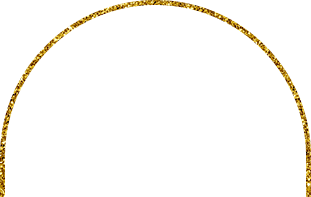To test the purity of honey at home, you can use several simple methods. Here are the most common ones:
1. Water Test: How it works: Add a spoonful of honey to a glass of water. Pure honey should settle at the bottom without dissolving quickly. Reliability: This test can be helpful, but it’s not foolproof as some honey varieties might dissolve differently depending on their composition. It gives a rough idea but isn’t always definitive. 2. Flame Test: How it works: Dip a cotton wick or cotton ball in honey and attempt to light it with a match or lighter. Pure honey is supposed to burn because it contains very little moisture, while adulterated honey (with added water) won’t burn easily. Reliability: This test is not very accurate. The presence of natural moisture in honey could make it difficult to burn even if it’s pure. Additionally, high moisture content could affect the burn. 3. Thickness & Flow Test: How it works: Pure honey is generally thicker and more viscous, while adulterated honey tends to flow more easily and can be watery. Reliability: This is a good indicator, but the consistency can vary based on the type of honey. For example, honey from different flowers (like wildflower vs. acacia) can have slightly different textures. 4. Crystallization Test: How it works: Pure honey tends to crystallize over time. If your honey doesn’t crystallize after several months, it could be adulterated with sugar syrup or water. Reliability: Crystallization is a natural process for pure honey, but it can depend on the type of honey as some varieties crystallize faster than others. 5. Vinegar Test: How it works: Mix honey with a little vinegar and water. If it foams, the honey might be adulterated. Reliability: This test is somewhat effective, but it’s best paired with other methods. 6. Professional Lab Tests: How it works: Labs can analyze the honey for glucose, fructose, and any additives. You’ll also get a detailed breakdown of its authenticity. Cost & Accessibility: While lab tests are more accurate, they tend to be costly and might not be feasible for regular use. 7. Label & Certification: How it works: Check if the honey has certifications like organic or raw, and look for trustworthy brands. Certified brands like Patanjali or Dabur are generally reliable, but still, look for labels like “100% pure honey” or “Certified by food safety authorities”. Reliability: Reputable brands with good customer feedback are often more trustworthy, though it’s still advisable to test the honey for your peace of mind. Key Tips: Look for raw, unprocessed honey which is less likely to be adulterated. Always check for legitimate certifications and read product reviews to ensure the honey is sourced responsibly. By using these methods together, you can have a better idea of the quality of the honey you’re consuming. If you’re serious about testing honey purity, a professional lab test is always the most reliable.
Testing honey quality at home can be a bit tricky, but there are some simple methods you can try. You’re right about the water test, it’s a common one. To do it: drop a spoonful of honey in a glass of water, pure honey will settle at the bottom without mixing quickly. If it dissolves, it might be adulterated. It’s not 100% foolproof, but it’s a quick check.
The flame test, interestingly, can show some results too. Dip a cotton wick in honey and try lighting it. If it burns, the honey is likely pure—though it doesn’t mean the honey is uncontaminated. Be careful though, fire hazard! Additives like water prevent it from burning. But lighting tests aren’t always perfectly reliable due to moisture content in some pure honeys.
Checking for thickness is another approach. Pure honey is generally thicker and flows slower than ones mixed with syrup. But, the type of honey matters too. Wildflower honey may have a different consistency compared to clover or acacia. These visual checks aren’t definitive, because pure honeys vary by region and nectar source.
Regarding brands like Patanjali or Dabur, many are tested and certified for quality. Look for labels indicating certification, like AGMARK, which assures standardization. Still, trust reviews and reputation; sometimes local sellers in farmer’s markets offer pure options if you know the source.
For the vinegar test, mix a bit of honey in a water-vinegar solution. If it forms a foam, it could indicate adulteration. Safe to try at home, but again, not exclusive proof.
If you want the most accurate analysis, lab tests are your best bet, though not particularly cheap or quick to get done. Some companies offer testing services, but they’re more for thorough verification needs.
At-home tests are mostly preliminary checks. They’re good if you’re skeptical about a new brand, but not entirely conclusive. My advice: buy from trusted sources, check certifications where possible, and if in doubt, a professional lab test is the way to go. Keep an eye on taste and smell too, pure honey has a distinct aroma and flavor. Happy honey hunting!







